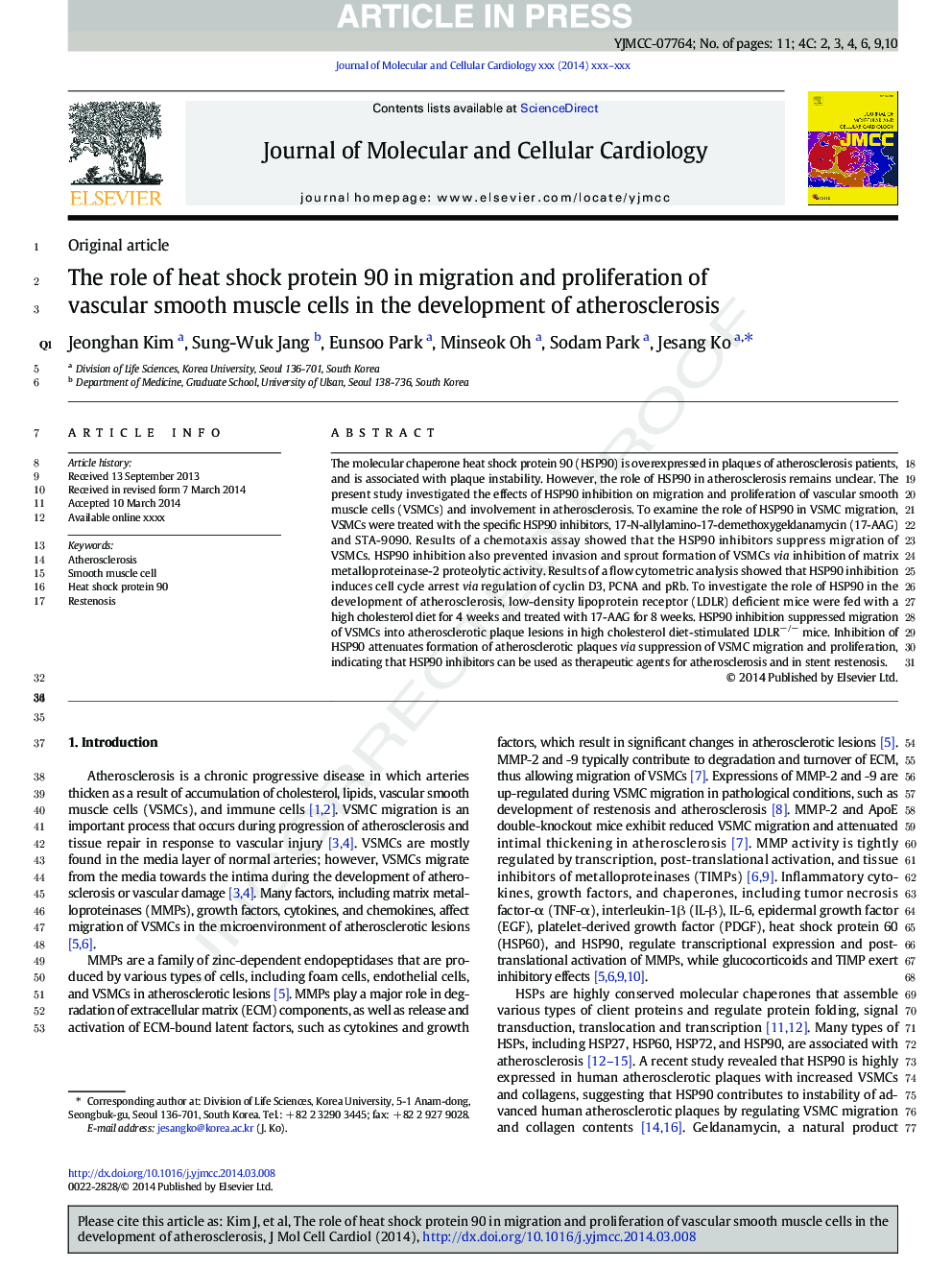| Article ID | Journal | Published Year | Pages | File Type |
|---|---|---|---|---|
| 8474840 | Journal of Molecular and Cellular Cardiology | 2014 | 11 Pages |
Abstract
The molecular chaperone heat shock protein 90 (HSP90) is overexpressed in plaques of atherosclerosis patients, and is associated with plaque instability. However, the role of HSP90 in atherosclerosis remains unclear. The present study investigated the effects of HSP90 inhibition on migration and proliferation of vascular smooth muscle cells (VSMCs) and involvement in atherosclerosis. To examine the role of HSP90 in VSMC migration, VSMCs were treated with the specific HSP90 inhibitors, 17-N-allylamino-17-demethoxygeldanamycin (17-AAG) and STA-9090. Results of a chemotaxis assay showed that the HSP90 inhibitors suppress migration of VSMCs. HSP90 inhibition also prevented invasion and sprout formation of VSMCs via inhibition of matrix metalloproteinase-2 proteolytic activity. Results of a flow cytometric analysis showed that HSP90 inhibition induces cell cycle arrest via regulation of cyclin D3, PCNA and pRb. To investigate the role of HSP90 in the development of atherosclerosis, low-density lipoprotein receptor (LDLR) deficient mice were fed with a high cholesterol diet for 4Â weeks and treated with 17-AAG for 8Â weeks. HSP90 inhibition suppressed migration of VSMCs into atherosclerotic plaque lesions in high cholesterol diet-stimulated LDLRâ/â mice. Inhibition of HSP90 attenuates formation of atherosclerotic plaques via suppression of VSMC migration and proliferation, indicating that HSP90 inhibitors can be used as therapeutic agents for atherosclerosis and in stent restenosis.
Related Topics
Life Sciences
Biochemistry, Genetics and Molecular Biology
Cell Biology
Authors
Jeonghan Kim, Sung-Wuk Jang, Eunsoo Park, Minseok Oh, Sodam Park, Jesang Ko,
